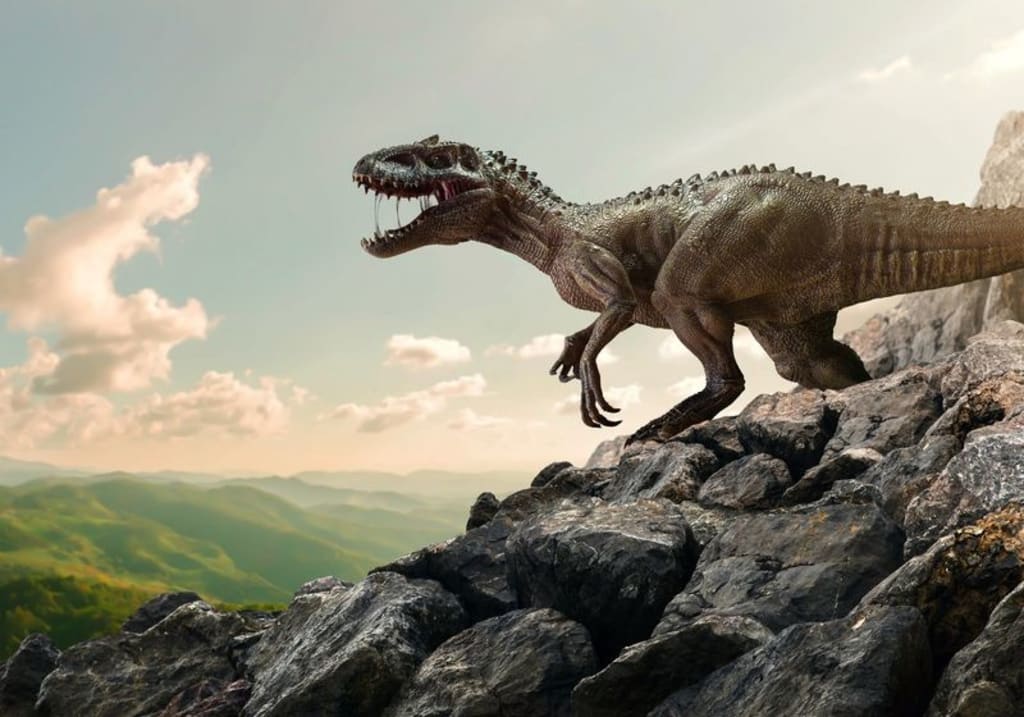Rebirth from Devastation
Earth's Journey After the Dinosaurs

About 66 million years ago, earth was inhabited by magnificent creatures known as dinosaurs. They roamed the planet, ruling over land, sea, and sky. But their glorious reign came to a tragic end, a cataclysmic event that forever altered the course of life on Earth.
It was a time when an immense asteroid, as massive as Mount Everest, hurtled through space on a deadly collision course with our planet. The impact was nothing short of apocalyptic, wiping out the mighty reptiles and ushering in a period of destruction and rebirth.
As the asteroid neared Earth, it blazed like a fireball, heating the air to unimaginable temperatures. Its colossal size, approximately 10 kilometers in diameter, ensured a devastating impact. Within seconds, it crashed into the planet's surface, unleashing a shockwave of immense power.
The impact site, off the coast of what is now Mexico, experienced the full force of the asteroid's destructive energy. The ground shook violently, and massive amounts of debris were sent hurtling into the atmosphere. A colossal blast wave radiated outward, obliterating everything in its path.
The aftermath was a scene of chaos and devastation. The ejected debris reacted with the atmosphere, causing acid rain to pour down upon the land. Scorching hot pieces of glass and rock rained from the skies, engulfing the Earth in a fiery downpour. The land burned, consumed by relentless fires that spread across continents like ravenous wildfires.
But the horror did not end there. The sheer force of the asteroid's impact sent shockwaves rippling through the planet. The energy had to find an outlet, and it did so in the form of an unfathomable mega tsunami. A colossal wall of water, over 10 meters high, raced across the oceans with unimaginable power. It struck coastlines with a force 30,000 times stronger than any known tsunami, reshaping the very contours of continents.
In the midst of this cataclysmic destruction, some dinosaurs managed to survive. Those located farther from the impact zone evaded immediate obliteration, escaping the infernos and the devastating force of the mega tsunami. However, their fate was sealed as the dust began to settle.
The aftermath of the impact initiated a new era of challenges for Earth. A phenomenon known as a "nuclear winter" emerged, not caused by nuclear weapons, but by the massive amount of debris thrust into the atmosphere. Sunlight was blocked, casting the planet into darkness for months, perhaps even years. Temperatures plummeted, and vast amounts of greenhouse gases were released into the atmosphere by the ongoing fires. The climate changed dramatically, disrupting the delicate balance of life on Earth.
Plants, unable to perform photosynthesis due to the lack of sunlight, withered and died. This catastrophic disruption rippled through the food chain, starving countless animals that had miraculously survived the initial impact. Acid rain continued to fall, further devastating already fragile ecosystems. The oceans, too, succumbed to the harsh conditions, becoming too acidic for marine life to endure. Species that were unable to adapt to such drastic changes faced extinction.
This prolonged period of harsh conditions, combined with the initial blast, led to the extinction of approximately 75% of life on Earth. The mighty Tyrannosaurus Rex, along with many other creatures, breathed its last breath, leaving behind an empty, desolate world—a place that was cold, acidic, and devoid of the vibrant life that once thrived.
Yet, in the face of such devastation, there was hope. Over a thousand years, Earth slowly began to recover from the post-apocalyptic winter. Life, though scarce and struggling, was ready to make a comeback.
Ferns, among the first plants to reappear after the impact, thrived in this new world. Tiny, furry creatures, reminiscent of raccoons, scurried across recovering continents. The oceans once again teemed with life, as creatures of all shapes and sizes multiplied and repopulated the waters.
Time marched on, and after millions of years, Earth finally restored its biodiversity. However, it was no longer the same Earth that existed during the time of the dinosaurs. This was the age of mammals, a time when mammals, birds, and flowering plants flourished and rocked the planet.
Though this new world was still filled with its own terrors—a time when beasts like the Paraceratherium roamed the land and megalodons reigned terror in the oceans—it was a world that had managed to recover and adapt after the last dinosaurs had faded into history.
Yet, even today, Earth faces numerous challenges and environmental crises. But it is not game over for our planet. Efforts are being made by dedicated individuals and organizations to protect and restore our world. Initiatives such as rewilding, cleaning up the oceans, and transforming dying ecosystems are being undertaken to make a positive change.
Inspired by these endeavors, we, too, can be guardians of our planet. By embracing sustainable practices, working together, and raising awareness, we can ensure that Earth thrives for generations to come. Let us unite to protect and preserve the wonders of our world, so that future inhabitants may continue to marvel at the beauty and diversity of our remarkable home.
In the end, let us not go extinct like the dinosaurs but learn from their fate and create a future where life can flourish, evolve, and endure.





Comments
There are no comments for this story
Be the first to respond and start the conversation.